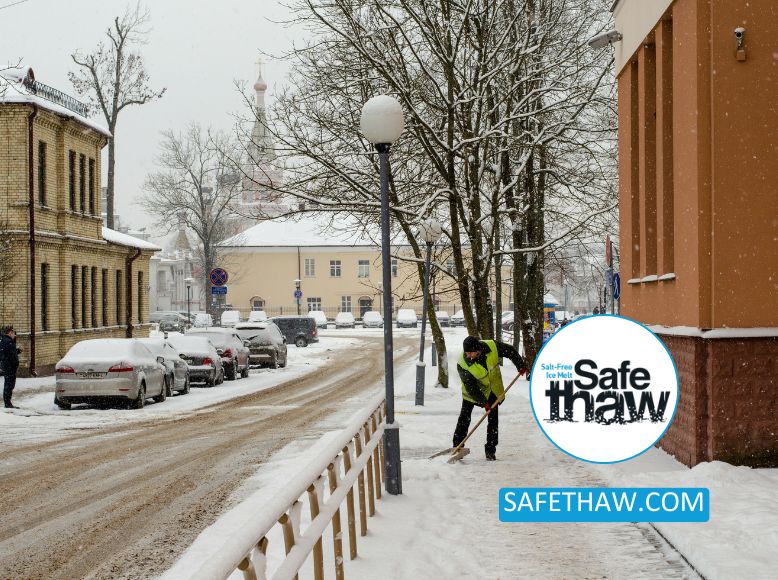How I Protected My Commercial Property From Winter Storm

Commercial property, like residential property, must be prepared for the winter months if it lies in a region where harsh winters are common. Cold weather and winter storms can seriously damage commercial property, necessitating costly repairs and possibly disrupting your operations or lowering the footfall.
Through my experience, I have learned that you need to adequately winterize all properties to safeguard investment and ensure that it is ready for winter activities. My business property winterization tips can assist owners to keep safe their stores, offices, and other facilities throughout the winter months. One of the most vital elements in this preparation is the use of safe industrial ice melt.

Let me tell you more about how I protected my commercial property from the winter storm.
- Check the drainage
My bill for repairing broken pipes was much more expensive than a tiny winter heating bill. So, keep your heaters on a low setting even if your property is vacant. In the winter, leaving your heater off might cause your pipes to freeze and burst.
Make sure your gutters are clean. I check for leaves and other debris that may have fallen over the autumn months. Water might accumulate on your roof due to clogged gutters causing leaks and costly water damage.
- Check your roof
If your commercial property’s roof has been damaged like mine, contact a roof repair provider right once. Before the storm, check the condition of your roof. Winter storms can loosen tiles or shingles, as well as cause additional roof damage. Leaks caused by loose or damaged shingles can cause damage to your home, including mold damage that is dangerous to human health.
- Check your property
Inspect your property regularly. Early detection of damage allows you to repair it before it worsens and becomes considerably more costly. Being friendly with your neighbors will help since they can call and notify you if there has been any harm. During the winter, gaps around windows and doors allow cold air to enter your property, raising heating expenditures.
Customers and potential tenants are more attracted to a clean, safe parking lot. I use an industrial ice melt on parking lots and sidewalks to improve vehicle traction and prevent accidents.
- Check your concrete and asphalt
Another thing I do is keep my property’s concrete and asphalt in good shape. During the winter, when water melts from the snow, seeps into the cracks, and then freezes, widening the cracks. The cracked concrete can break apart even further. Potholes can form in the asphalt and concrete as a result of the freeze-thaw cycle. Hence, it is crucial to clean snow from your concrete. Salt-based ice melt can cause irreversible damage to your concrete, asphalt, and metals. How to melt ice without salt? The answer lies in natural and chloride-free ice melt.
I opted for acetate-free, non-corrosive, and non-conductive ice melt for my business. I used it before and after the winter storm. It prevented the accumulation of snow and also gave a protective cover to my surface for 72 hours. It was safe for my concrete, machines, employees’ vehicles and also provided traction.
100% Salt & Chloride-Free Ice Melt for Winter Storm Protection.
Conclusion
If you take excellent care of your business property, it will be able to withstand the winter. You can ensure that your building is ready for spring by winterizing your roof, maintaining concrete and asphalt, and preparing the grounds by using a salt-free ice melt.
Try Also Our Other Winter Safety Products:
Safe Paw
The Original and #1 Selling Pet and Child Safe Ice Melt for over 20 years. Guaranteed environmentally safe –It won’t harm animals or children, and it won’t damage your property. That’s Safe Paw. Safe Paw can change how winter affects our planet.

Walk On Ice
The handy disposable canister can be taken everywhere, with the same 100% naturally occurring minerals that provide instant traction on ice or snow. Use it on sidewalks, steps, or as an instant traction agent for your car.


